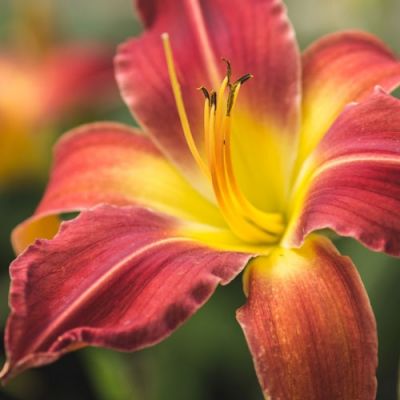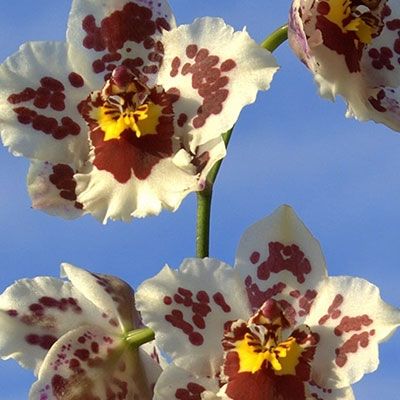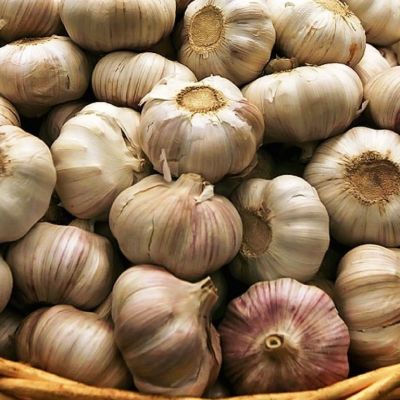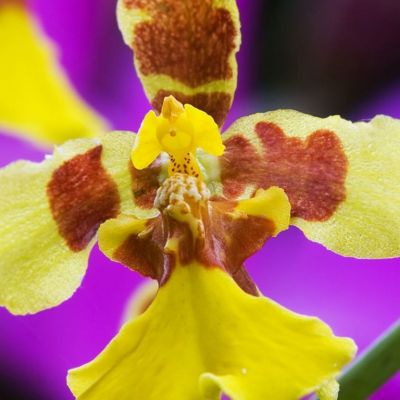07.2025 - July Gardening Tips

July can be one of the hottest months of the year, so keep your eye on the forecast and watch out for tell tale signs of plants wilting.
Make sure that you regularly water everything including flower beds, containers and hanging baskets because they can dry out really quickly in the summer sun, even more so if it's windy.
If temperatures are average and rainfall generous, then growth in your garden will be prolific making it a busy month in the garden for all of us.
When to Water
The very best time to water is early in the morning when it's cool, this will allow the water to run down into the soil and reach the roots of plants without excess water being lost to evaporation. Making water available early in the morning will ensure that plants have all the water they need to deal with the heat of the summer sun. The second best time to water is late afternoon into early evening, this will enable plants to dry before night time thus avoiding damp leaves which promote fungus and other problems, especially in vegetables. Watering at this time will also give them several hours to take up water without contending with the heat of the sun.
Installing a Water Butt
If you haven't installed a water butt then think about doing so, plants prefer rain water over chlorinated tap water and collected water is not only free but environmentally friendly. We have a range of sizes available from 100 litres upwards which include everything you need to get started. We also have a selection of accessories including connector kits, overflow kits and more.
Install a Watering Kit
If you're going on holiday then don't forget to arrange for a friend or neighbour to water your plants. If this isn't possible then a watering kit will become an invaluable asset to your garden or greenhouse. A watering kit is superb for precise watering, it will provide a steady flow meaning that plants will be thoroughly watered without wastage. A watering kit can also be used with a timer ensuring that plants get the right amount of water at the right time of day, for the correct length of time.
We have several varieties of watering kits, pop in and see our selection, if you need help just ask.

Fruit
July presents us with the opportunity to reap the fruits of our labour and sample some of the sweetness of summer. If you grow your own fruit then gooseberries, rhubarb and early strawberries are amongst the delicious fruits that are ripe for the picking. Later this month you should be able to pick blackcurrants, raspberries, redcurrants, tayberries, white currants, rhubarb and more strawberries.
If you haven't planted a lot of soft fruit in your garden this year then we still have a selection of young plants in stock that have had a great start and many of which are now flowering. Choose from several different strawberry varieties, blackberries, blackcurrants, blueberries and many more.
It's a fantastic month for baking fruit crumbles, cakes, eating strawberries and cream and making your own refreshing summer cordials. Remember that now is the time to net or put a crop cage around all soft fruit before the birds decide to take an active interest. Don't leave it too late, as birds can strip berries clean in a matter of days.
Vegetables
The hectic sowing part of the year has passed but we can still sow:
Spring Cabbage, Chicory, Chinese Cabbage, Kohlrabi, Lettuce, Peas, French Beans, Beetroot, Carrots, Radishes and Mixed Salad Leaf.
Lawn Care
The appearance of lawns tends to peak in July and if you've noticed that yours is looking a little tired then it may be time to give it a feed. You can leave the box off the mower and let the cuttings spread over the grass (or spread your cuttings manually) to provide a shallow mulch that will keep it in good condition or add a lawn feed. Adding a lawn feed at this time of year is extremely beneficial as it will provide your grass with protection from the warmer sun and keep it in great condition until the end of the season.
Keep on top of your lawn by raking out the accumulation of dead brown grass, moss and weeds from your lawn or borders. This will not only encourage new grass to grow but also keep existing grass in good condition.
Pruning
It's important to prune shrubs, herbaceous perennials and other plants at certain times of the year in order for them to give their best display or crop. As a rule of thumb, most woody plants are best pruned when they're dormant or if spring flowering, when their flowers begin to fade. Herbaceous plants are best cut back towards the end of the growing season after they've flowered.
Knowing what to prune and when comes with experience, pruning at the wrong time of year may result in less flowers or fruit but it is rarely fatal for the plant so don't be afraid to have a go.
This month we recommend pruning:
- Wisteria (prune the side shoots from the main branch network to about 20cm from their base)
- Abutilon vitifolium (prune out any previous winter's damage once flowered, it's also worth deadheading)
- Deciduous Magnolia (if needed)
- Carpenteria - no routine pruning is necessary but if yours needs pruning then now is a good time (immediately after flowering) to remove dead or damaged stems as well as rubbing branches.
- Apples and pears to maintain a good shape
- Plum, apricot, peach and cherry trees (to reduce the risk of silver leaf disease)
- Fruited stems of blackcurrant bushes once harvested
- dead heading:
- Lupins (for the promotion of more flowers),
- Bedding plants and perennials
- Roses
- Peonies
- Sweet Peas etc
- and cutting back:
- Delphiniums and Geraniums.
- Penstemon just above the bud as flowers fade
Late Summer Colour
For many of us summer has just started but any serious gardener knows that you have to plan ahead for the best results. Now is the time to start thinking about plants that will provide late season colour.
Autumn flowering bulbs such as crocuses, dahlia, nerine, cyclamen and begonias can be planted at the end of this month for a late seasonal display.
Spring flowering bulbs such as tulips, hyacinths and others can be dug up this month and stored in a cool dry but airy place until the autumn.
Keep sowing herbaceous seeds, it's unlikely that any will flower now but you should be able to build some good strong plants ready for next year. If you're wanting to dry and store your own seeds then this month is the time to start collecting them.

Ponds and Aquatic Life
This month it's very likely that ponds will need some attention in order to keep them looking healthy and in top condition. Remove yellowing leaves from lilies and other plants as soon as they're spotted, make sure they don't fall into the water and rot because this will increase algae and decrease the quality of the water. Any surface or blanket weed should be removed with a net or rake, this will increase the oxygen in the water which will help any aquatic life. If water levels drop then top up with water from a water butt and remember to clean out filters and pumps to ensure that everything is working as well as it should be.
Gardening Jobs for This Month
- Keep mowing grass and raking out dead brown grass. Now's a good time to give your lawn a summer feed, especially if it will be the first of this year. This will ensure that your lawn remains in 'tip top' condition throughout the rest of the season.
- Net cherries and other soft fruits to protect them from birds or install a crop cage.
- If you haven't already then install a water butt to make the most of the water that we do get during these dry months.
- Make sure you water everything thoroughly at least twice a week. Containers and hanging baskets should be watered every day, twice a day when the weather is hot and windy.
- Apples can be thinned out this month.
- Pinch out the side shoots on tomatoes to prevent unwanted growth, this will ensure that your fruit will be of a decent size.
- Feed tomatoes and cucumbers regularly with a liquid feed. Make sure that tomatoes and peppers are watered at regular intervals to prevent blossom end rot and splitting.
- Damp down greenhouses to prevent red spider mites.
- Ensure your greenhouse has good ventilation, consider using blinds as a shield if your greenhouse is getting too hot.
- First early potatoes can now be harvested. Check before lifting.
- Make sure you have adequate supports in for climbing plants and plants that have a tendency to flop. Nets work wonders for climbing peas and beans.
- Prune spring flowering shrubs and dead head flowers on a regular basis to encourage plants to put their energy into producing more flowers. Roses, sweet peas, peonies, bedding plants etc. Plants that have finished flowering can be cut back to keep the garden tidy. Many plants will provide a second flush of flowers in abundance if cut back now, hardy geraniums and salvia to name a couple.
- Cut back growth in hanging baskets – this will encourage new growth and quite often revive a tired display
- Grow new plants from strawberry runners and remove the unwanted runners so that plants maintain their strength
- Pinch out the top of broad beans to discourage blackfly
- Net brassicas and check them regularly for butterfly eggs and caterpillars
- Keep on top of weeding, make sure you get dandelions before they go to seed.
- Plant out broccoli, sprouts, cabbages and leeks




